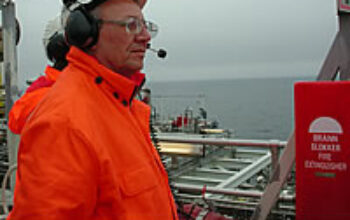Scientific discovery is often heralded as a systematic endeavor, characterized by meticulous methodologies and a linear path to the elucidation of the unknown. However, many breakthroughs emerge from a tapestry of serendipity, audacity, and sheer perseverance. Now, consider this: what if the greatest discoveries lie not solely in the realm of research but embedded within the very challenges that stymie progress? This article delves into the narrative of discernible triumphs against formidable odds, detailing instances where intellect collided with adversity to yield unprecedented advancements in knowledge.
To understand the essence of scientific discovery, we must first examine the dichotomy between expectation and reality. Most scientific endeavors are fraught with unpredictable variables, ranging from the inherent complexities of the subject matter to the limitations of available technology. It is within these labyrinthine nuances that researchers often encounter obstacles that seem insurmountable. The traditional scientific method, although invaluable, is sometimes rigid, allowing for little deviation from the predetermined hypothesis. Hence, a pivotal question emerges: How can scientists leverage adversity as a catalyst for innovation?
The history of scientific triumphs reveals that some of the most significant breakthroughs have occurred when researchers faced seemingly insuperable barriers. Consider the groundbreaking work of Alexander Fleming, whose chance observation of penicillin’s antibacterial properties was borne out of a series of unexpected circumstances. In this instance, contemplation of what might have been dismissed or overlooked led to the foundation of modern antibiotic therapy. It propounds an intriguing hypothesis: does the potential for discovery increase in tandem with the likelihood of failure?
Delving deeper, we find that scientific communities often cultivate a culture resistant to failure. Failure, in many respects, can be stigmatized, shrouded in the disapproving shadows of academic critique. Nevertheless, a burgeoning school of thought advocates for the embrace of uncertainty and error within research environments. Notably, turning adversity into advantage requires a fundamental shift in perception, viewing setbacks not as final verdicts but as exploratory detours that enrich the journey toward understanding.
An illustrative case can be drawn from the realm of astronomy and its inherent complexities. The quest to unlock the secrets of the universe has, at times, bordered on the absurd and the illogical. The controversial discovery of cosmic microwave background radiation (CMBR) exemplifies this. Initially considered an anomaly, the signal was fraught with misinterpretation and skepticism. Yet, through rigorous testing and a commitment to unearthing the proverbial truth, scientists were able to recognize its significance. The CMBR, a remnant of the Big Bang, has revolutionized cosmology, illustrating how chance encounters and persistent inquiry can yield revolutionary insights.
The intersection of creativity and analytical rigor emerges as a critical focal point in exploration. To address the challenge of transforming failure into opportunistic discovery, one must expand the confines of conventional thinking and employ interdisciplinary approaches. The integration of methodologies from disparate fields—art, literature, and philosophy—can infuse scientific inquiry with fresh perspectives. Such amalgamations not only enhance problem-solving capabilities but also embolden researchers to traverse uncharted territories of thought.
Moreover, the significance of collaborative endeavors cannot be overstated in combating the challenges that often accompany scientific inquiry. Complex issues confronting modern science—climate change, public health crises, and energy sustainability—demand a concerted effort that transcends individual disciplines. By creating cross-disciplinary teams, researchers can harness diverse skills and perspectives, facilitating a comprehensive approach to problem-solving. Such collaborative synergy may also engender an environment where failure is normalized, fostering resilience and innovation.
However, how might one cultivate this cooperative spirit amidst the competitive nature of academic research? Herein lies the challenge: the predisposition of some scientists to guard their discoveries closely, motivated by fears of obsolescence or obfuscation. Addressing this proclivity necessitates a cultural metamorphosis that champions intellectual sharing and collective advancement. The establishment of frameworks that incentivize collaboration over competition may hold the key to unlocking profound discoveries nestled within the fabric of adversity.
Looking toward the future, the potential implications of embracing challenges as avenues for discovery are vast. The cultivation of a scientific landscape that respects the complexity and unpredictability of research processes opens the floodgates to innovation. Acknowledging that the path to progress is seldom linear allows researchers to view failures as integral components of the scientific narrative, each contributing a valuable lesson that informs future exploration.
In conclusion, the interplay between discovery and adversity encapsulates the essence of scientific inquiry. Posing the question of how challenges may serve as the impetus for greater breakthroughs invites a deeper reflection on the foundations of scientific exploration. As researchers continue to navigate the conundrums of their respective fields, it is imperative to embrace uncertainty and failure, transforming them from mere obstacles into powerful instruments of innovation. With this cultural shift, the scientific community can aspire to transcend the limitations that have historically constrained discovery, unlocking new frontiers of knowledge against all odds.






